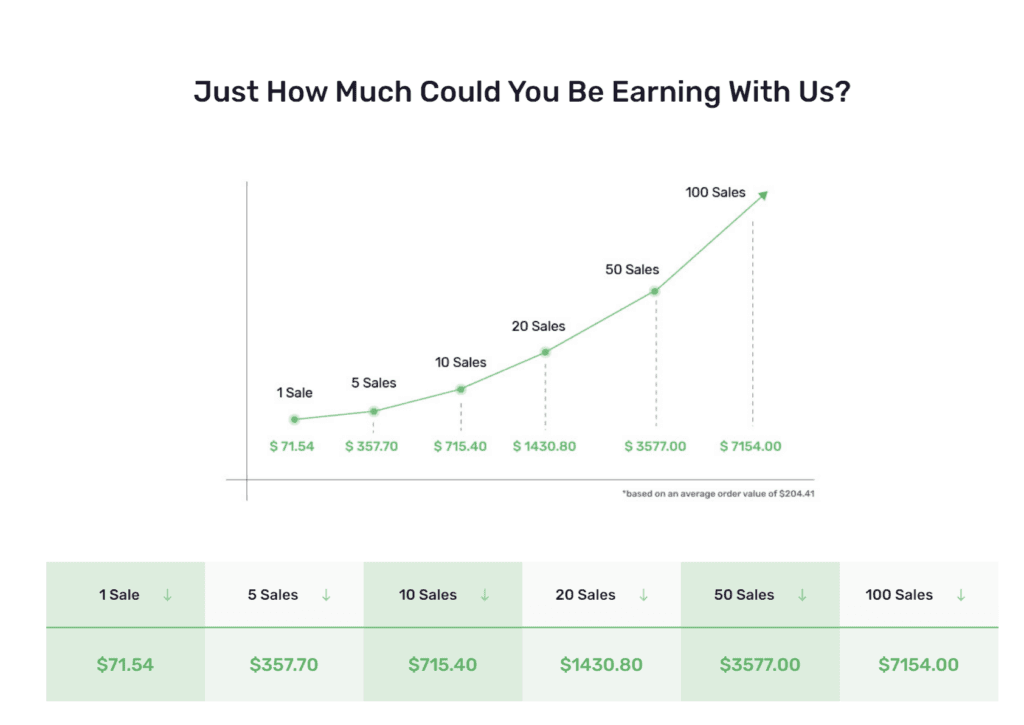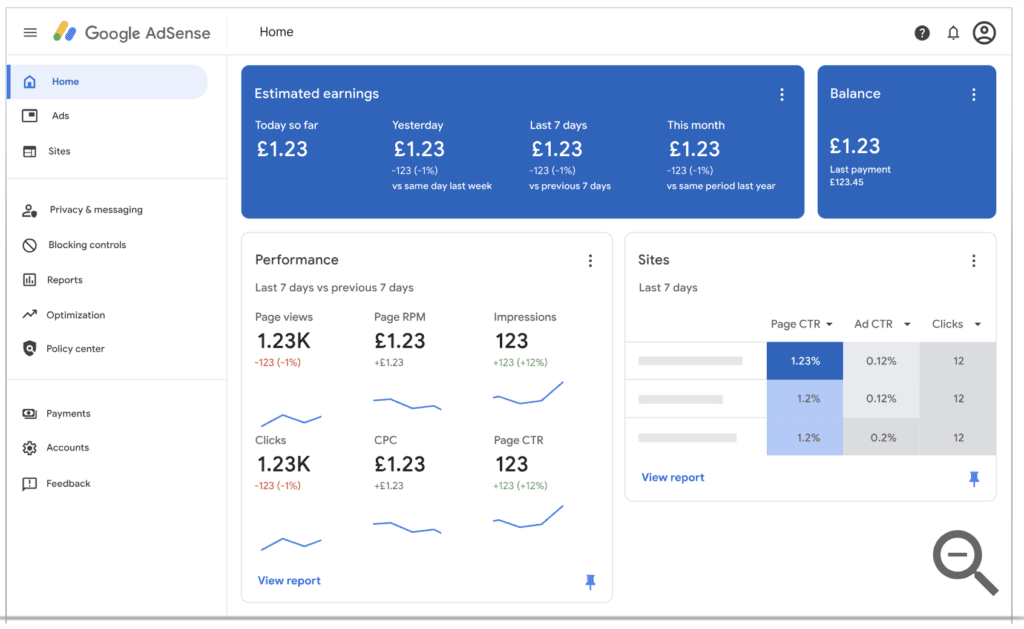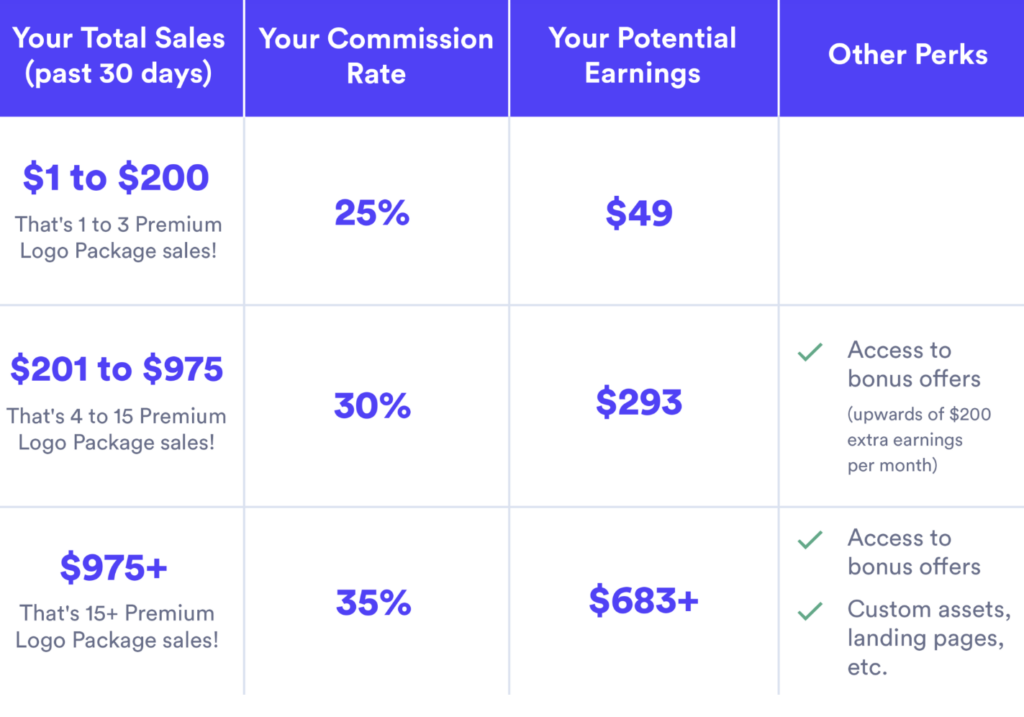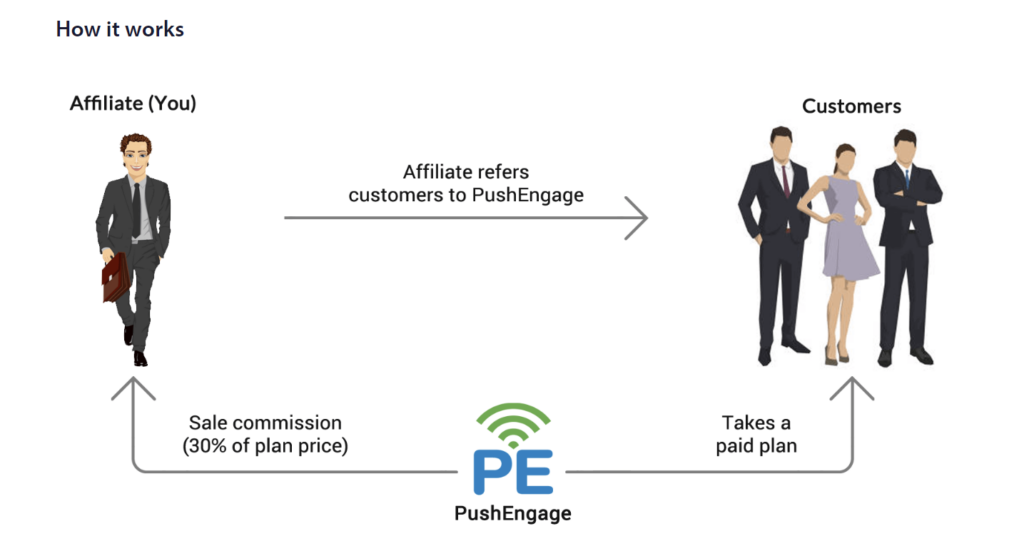
Are you wondering which of the affiliate commission models is right for you? If so, we have you covered!
Affiliate marketing has fundamentally changed the way people make money online. Promoting products or services allows affiliate marketers to earn commissions on sales, leads, or other actions driven through their referral links, which translates to more money in the bank.
This business model has opened up plenty of exciting opportunities for sales and partnerships, making it a smart choice for content creators and marketers across all industries.
The thing is, there are several different affiliate commission models that can impact who you choose to work with. These various models determine how and when you get paid, so it’s not hard to see why choosing the right model for your needs and long-term goals is so important.
Today, we will dive into 7 of the most common affiliate commission models you need to know. Our goal is to break down how each type works, as well as the pros and cons you need to be mindful of before you decide what’s right for you.
Additionally, we’ll provide actionable insights to help you select the right model for your needs and effectively implement it into your marketing strategy.
| Affiliate Commission Model | Description |
| Pay Per Sale (PPS) | Affiliates earn a commission for each sale made through their referral link, typically a percentage of the sale amount. It’s popular but requires skill in converting visitors into paying customers. |
| Pay Per Lead (PPL) | Affiliates earn by generating leads, such as sign-ups or form completions, rather than sales. Easier to achieve than sales but usually offers lower payouts. |
| Pay Per Click (PPC) | Affiliates earn a commission every time a visitor clicks on their referral link, regardless of whether a sale or lead is generated. It’s easy to manage but offers lower earnings per click. |
| Recurring Commissions | Affiliates earn ongoing commissions as long as the referred customer continues to pay for a subscription service. It provides a steady income stream but requires time to build up earnings. |
| Tiered Commissions | Affiliates receive higher commission rates as they achieve more sales or leads. It’s motivating but can be challenging to reach higher tiers, especially for beginners. |
| Two-Tier Affiliate Programs | Affiliates earn commissions on their sales and on the sales made by other affiliates they recruit. It’s a way to diversify income but requires strong recruiting and management skills. |
| Flat-Rate Commissions | Affiliates earn a fixed amount for each sale or action, regardless of the sale’s value. It’s simple and predictable but lacks incentives for higher-priced transactions. |
Pay Per Sale (PPS)
Pay Per Sale (PPS) is one of the most widely used affiliate commission models. With PPS, affiliates earn a commission every time they convince someone to buy a product or service using their exclusive referral link. In most cases, the amount affiliates earn is a percentage of how much customers spend.
For example, if the PPS rate is 10%, a $100 order would net the affiliate $10.
A lot of affiliate marketers prefer this commission model because they are able to scale up their earnings as their audience grows. When they sell products, they earn more money; it’s that simple. We’ve learned that the correlation between marketing and earnings can be highly motivating.

However, it also demands a certain degree of skill and effort to convert visitors into paid customers, so this could be more challenging for new affiliate marketers who haven’t yet built an established audience.
Another drawback to consider is conversion rates can be relatively low because it’s easier to get people to do something like check out a blog post or subscribe to an email list than it is to get them to pull out their credit card and make a purchase.
Despite these challenges, PPS is one of the most popular ways to make money as an affiliate marketer.
If you’re thinking about trying this model for yourself, you’re in luck. We found that close to 80% of online businesses have some form of an affiliate program, so there are plenty of options out there, regardless of your niche.
Pay Per Lead (PPL)
With Pay-per-lead (PPL), affiliates earn by generating leads rather than outright sales.
Quite simply, you get paid when a referred visitor takes a specific action on one of your partner’s websites, such as signing up for a newsletter, filling out a form, or registering for a free trial. It’s a popular choice for industries with longer sales cycles because it focuses on capturing interest and potential customers rather than immediate sales.
One noteworthy advantage of a PPL model is that it’s generally easier to generate leads than sales. People are often hesitant to make a purchase when they discover a website for the first time, but they are often more willing to join an email list.
The lower barrier to entry means that even new affiliates can start earning without having to master complex sales techniques right away.
However, there are some downsides to consider. Because generating a lead is typically easier than making a sale, the payouts per lead are usually lower compared to PPS. In other words, you’ll need a high volume of leads to build momentum and make substantial earnings.
There are some cons to consider, but many companies find the PPL model highly effective and are willing to pay for quality leads, which means there’s a market for affiliates.
Industries like credit card companies and insurance firms frequently use this model, appreciating the value of acquiring potential customers who can be nurtured into sales over time.
Pay Per Click (PPC)
The Pay-per-click (PPC) model is another way for affiliates to earn money each time a visitor clicks on an affiliate link. Unlike the other two types of commissions we’ve discussed so far, the PPC model doesn’t require the visitor to do anything but click the link to the partner website.
PPC is widely used because it’s simple, easy to manage, and, in most cases, effective. It’s a powerful way for businesses to boost brand awareness, especially if they are just starting out.
Since you don’t need to convince visitors to buy anything or fill anything out, you can start earning commissions quickly. This commission type is particularly beneficial for new affiliates who may not yet have the skills or experience to drive sales or generate leads.
However, the PPC model also has its drawbacks. Commissions per click are typically low, even lower than PPC, which means you need an even larger volume of clicks to make decent earnings. There’s also a risk of attracting low-quality traffic that doesn’t convert into leads or sales for the advertiser, which might affect the longevity and long-term success of your affiliate partnerships.
Google AdSense is the most well-known version of PPC. This program allows affiliates to monetize traffic simply by adding ad units to their web pages. In our experience, this is particularly lucrative for sites that get a lot of traffic and engagement.
Ultimately, PPC might not offer the highest payouts, but it’s still an attractive option for many affiliates because of its accessibility and availability.

Recurring Commissions
The Recurring Commissions model is one of the best ways to generate steady income. As the name implies, recurring means affiliates earn money as long as the customer keeps using and paying for a service.
The biggest benefit is also tied to the name; unlike one-time payments, recurring commissions let you earn from the same customer over and over again.
You’ll see this model used most often with subscription-based products like software services (SaaS), membership sites, and other regular payment services.
SaaS products are especially appealing because they often offer commissions ranging from 20% to 70%. This means that each time a customer pays their subscription fee, you could earn 20 to 70% of what a license costs!
The high earning potential, combined with regular payments, can turn each customer into a long-term income source.
However, building a significant income with this model takes time. At first, your earnings might be small because it takes time to convince people to subscribe to a new product. It’s important to promote high-quality services that you use and trust because people can feel this authenticity and might be more likely to stick around.
Recurring commissions can be very rewarding if you’re patient and focus on building long-lasting relationships with your audience.
Tiered Commissions
A tiered commission model is designed to reward affiliates for their performance. Put plainly, your payout will increase based on how many sales or leads you convert.
Here’s how it works: Let’s say you’re promoting a meal delivery subscription box. When you start, you make 10% on each box sold. After 50 boxes are sold, your rate goes up to 15%; then, after 200, your rate goes to 25%.
The rates and structure will vary based on your partners, but overall, it’s a very motivating and intriguing value proposition for affiliate marketers. Knowing that you can earn more by working harder can be a great boost.
However, there are challenges to consider. To reach the higher commission tiers, you often need to achieve a large volume of sales or leads. This can be difficult, especially for new marketers who don’t have a large audience or are working in a competitive niche.
You’ll have the best opportunity to thrive with this commission model if you’re patient, persistent, and know a lot about the service you want to promote because the more you sell, the higher your earning potential.

Two-Tier Affiliate Programs
Now, let’s talk about the two-tier commission model. This program takes things a step further by allowing affiliates to earn commissions on their sales, as well as the sales of affiliates they recruit.
The affiliate partner can create a new revenue stream by reaching out to people in their circle and convincing them that they can also make money by selling the same product or service.
In most cases, the rate is lower for the people you onboard. You could earn 5% on your sales and 1% on your partner sales. If you have the network for it, this is a good way to diversify your revenue while getting others involved in what you do.
However, managing a two-tier affiliate marketing partnership can be very challenging. It requires you to have good recruiting and management skills. You need to be able to attract other affiliates and help them succeed, which can add a layer of complexity to your work.
You’ll also need to be careful because if you recruit too many people, you could shrink your own sales opportunities.
With these drawbacks in mind, I still believe this strategy can be effective. But it’s better suited for advanced affiliate marketers who are looking to try a second or even third revenue stream. You’ll want to wait on this if you’re just now getting into affiliate marketing.
Flat-Rate Commissions
Flat-rate commissions offer a simple and predictable way for affiliates to earn money. In this model, affiliates earn a fixed commission amount for each sale or action, regardless of the sale’s value. This makes it easy to know exactly how much you will earn each time you drive a sale or lead.
One of the key benefits of flat-rate commissions is the simplicity and predictability they offer. You don’t have to worry about varying percentages or fluctuating earnings. Instead, you earn the same amount for each transaction, which makes it easy to understand your profits and return on investment.
We believe this straightforward approach can be very appealing, especially for new affiliates.
However, the flat-rate model does have its drawbacks. Since the commission amount is fixed, there’s no additional reward for higher-priced sales. Unlike percentage-based models, where you earn more for bigger sales, flat-rate commissions don’t provide extra incentives to push for higher-value transactions.
Flat-rate commissions are often used for subscription boxes and service-based businesses. For example, a marketing agency might offer a fixed commission for each client referral, regardless of the services they purchase. This makes it easier for affiliates to focus on driving consistent leads without worrying about the value of each individual sale.

Despite the potential limitations, the Flat-Rate Commissions model can be very effective. It offers a clear and predictable earnings structure that is easy to understand and manage. It’s a great choice for people who want to do affiliate marketing without all of the complicated math problems.
Actionable Tips for Choosing the Right Affiliate Commission Models
Now that we’ve talked about a few different affiliate commission models, let’s go over a few quick tips to help you choose the best one(s) for your needs and goals.
- Consider Niche and Products: First, you should choose commission models that align with the goals, needs, and interests of your target audience. For example, someone who streams video games would want to promote gaming chairs, computer tech, energy drinks, and other products most of their built-in audience loves or needs.
- Assess Traffic and Conversion Potential: Analyze your website’s traffic and conversion rates. If your site has high traffic but low conversion rates, Pay-per-click (PPC) might be ideal. Conversely, if you excel at turning visitors into customers, models like Pay Per Sale (PPS) or Pay Per Lead (PPL) could be more profitable.
- Consider Which Platforms You’ll Use: There are plenty of different ways to connect with your audience and convince them to check out the products you’re promoting. It’s estimated that 79% of affiliates use blogging, while 67% use social media. So, thinking about which platforms you’ll use will likely have an impact on which commission model you want to pursue.
- Time and Effort Commitment: Next, think about how much time and effort you can invest in your affiliate marketing. If you don’t have a lot of time, simple models like PPC are much more manageable. On the other hand, if you have a lot of time and effort to spare, higher reward models like PPS or recurring commissions might be more suitable.
- Analyze Long-Term Earnings Potential: You should think about how much you want to earn over time. Ideally, you may want to conduct your business assessment, and think about models that offer recurring or residual income since they are a little more sustainable.
- Diversify Your Portfolio: Don’t rely on just one commission model. Diversifying your affiliate portfolio can minimize risks and maximize opportunities. Combining various models allows you to capitalize on different marketing strategies and revenue streams, enhancing overall profitability.
Start Your Affiliate Marketing Journey Today
There you have it! Each affiliate commission model has its own benefits and challenges, so think carefully about your goals and needs so you can figure out what will work best for you.
Now that you understand the different affiliate commission models and how you can pick the best one for your needs, you’re ready to get out there and start building your affiliate marketing empire!
You’ll want to reach out to potential partners, start creating content, and streamline your process with Thirsty Affiliates so you can save time and protect your hard work.
This post was guest written by Syed Balkhi, a seasoned entrepreneur and the founder of WPBeginner, the largest free WordPress resource site.
Affiliate Link Disclosure